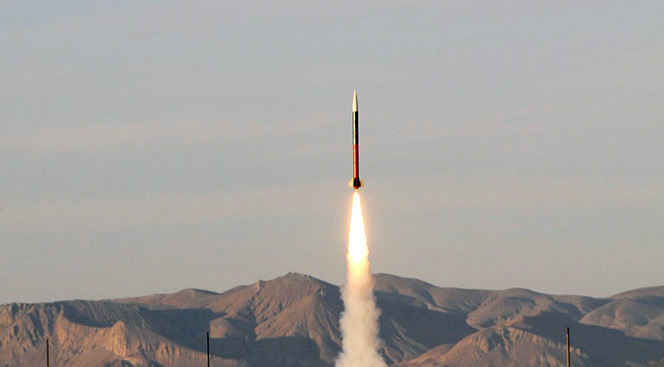WCC Research with Nonconventional Rocket Propellants
by Joseph E. Ciotti, Project Imua Manager
Nā Huaka‘i Newsletter, Vol. 13, Summer 2020
Under the auspices of HSGC’s Project Imua, the high-power rocketry team at Windward Community College has been conducting research on nonconventional rocket propellants, including sublimation and hybrid motors.
Sublimation Rocket
On August 13, 2017, a 3D printed sublimation-powered rocket was successfully deployed from a sounding rocket as it neared apogee along its suborbital trajectory. This was Project Imua’s second test of a sublimation rocket from NASA Wallops Flight Facility (WFF). The principle behind this type of nonconventional rocket motor relies on the sublimation of a solid at decreased pressure and increased temperature. The propellant in both flights consisted of naphthalene, the main ingredient in mothballs. When this non-incendiary propellant is exposed to the near zero pressure of outer space, sublimation causes the solid naphthalene to transition directly into its gaseous state. As the gas expands, it is directed through a De Laval nozzle, providing a micro thrust. The second test flight included a Ni-Chrome heating coil that was activated prior to deployment to increase the propellant’s ambient temperature and consequently speed up the rate of sublimation. Development of this simple, low thrust system could prove useful for venier controls needed for minor attitude corrections.
A laser rangefinder as well as still and video cameras, designed by Honolulu Community College, were mounted on the sounding rocket’s payload deck to monitor the movement of the sublimation rocket after its release from the deck by a stepper drive thread. Analysis of the data indicated that the sublimation rocket exhibited the expected micro thrusting. Unfortunately, the rocket’s intended straight-line path was compromised by a torque imparted at release by the metal channel that guided the rocket along the drive thread. This resulted in a lateral motion, which complicated the analysis.
The WCC team is considering ways of eliminating this unwanted torque for a future RockSat-X flight from WFF. The college’s rocketry lab recently acquired a high-performance vacuum chamber to test the sublimation properties of other potential propellants.
Hybrid Rocket Motor
Currently, the WCC team is assembling and testing a hybrid rocket motor. Its maiden flight was originally scheduled for this summer, but postponed when the Experimental Sounding Rocket Association was forced to cancel its ESRA 2020 competition in New Mexico due to the coronavirus pandemic. Revised plans now call for test flying this hybrid rocket at the ARLISS 2020 competition in Nevada (Project Imua Mission 8). After proof-of-flight, the hybrid rocket will be launched at Spaceport America Cup’s ESRA 2021 competition (Project Imua Mission 9).
Aboard will be an atmospheric sensing payload consisting of a two-CubeSat-swarm (2U parent with releasable 1U child) designed by Honolulu Community College. Both launches are pending any future COVID-19 travel restrictions.
The propellant powering hybrid rocket motors exists in two different phases—a solid fuel and a liquid or gaseous oxidizer. SpaceShipOne, which successfully made the first private crewed spaceflight in 2004, used a hybrid motor. Unlike solid rockets, hybrids can be easily throttled and even restarted. They also pose a lower explosive hazard. In contrast to liquid rockets, hybrids are mechanically simpler, requiring fewer pumps and valves. One major disadvantage of hybrids is a decreasing thrust curve resulting from its non-constant ratio of fuel production to oxidizer flow rates as the fuel grain regresses.
For its first hybrid motor attempt, WCC is using a commercial off-the-shelf motor produced by Contrail Rockets. Liquid nitrous oxide (laughing gas) is pumped into an upper chamber prior to launch. Once this tank is fully pressurized, the nitrous oxide becomes flammable. Prior to this fueling, the motor is inert. Upon ignition, a valve opens allowing the hot nitrous oxide to flow through a proprietary solid fuel, causing volatiles in its grain to ignite. The resulting high- pressure exhaust exits the nozzle providing the rocket’s thrust.
The WCC team has already conducted four hybrid motor tests at the college’s Static Rocket Motor Test Facility. The first two tests resulted in failure due to an over-pressurization of the main fill line and battery problems.
With these issues resolved and refinements made to the launch protocols, a third static test was conducted on January 11, 2020 that resulted in the team’s first successful ignition of a hybrid motor —and likely the first in Hawaii. Burn time for this M class motor was 4.2 sec. Its total impulse of 6,547 Ns is calculated to lift the rocket and payload to an altitude of 9,730 feet AGL.
A fourth test on February 22 also proved successful. The WCC rocketry team is planning one additional static motor test in late summer prior to launching its first hybrid rocket at this Fall’s ARLISS competition.


